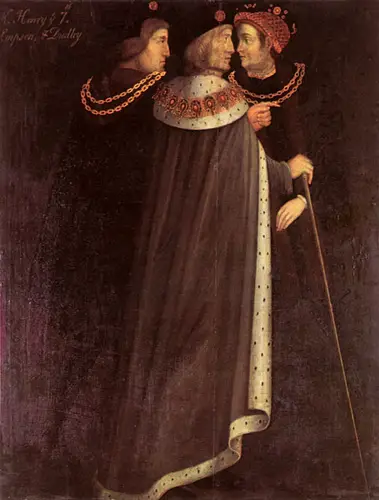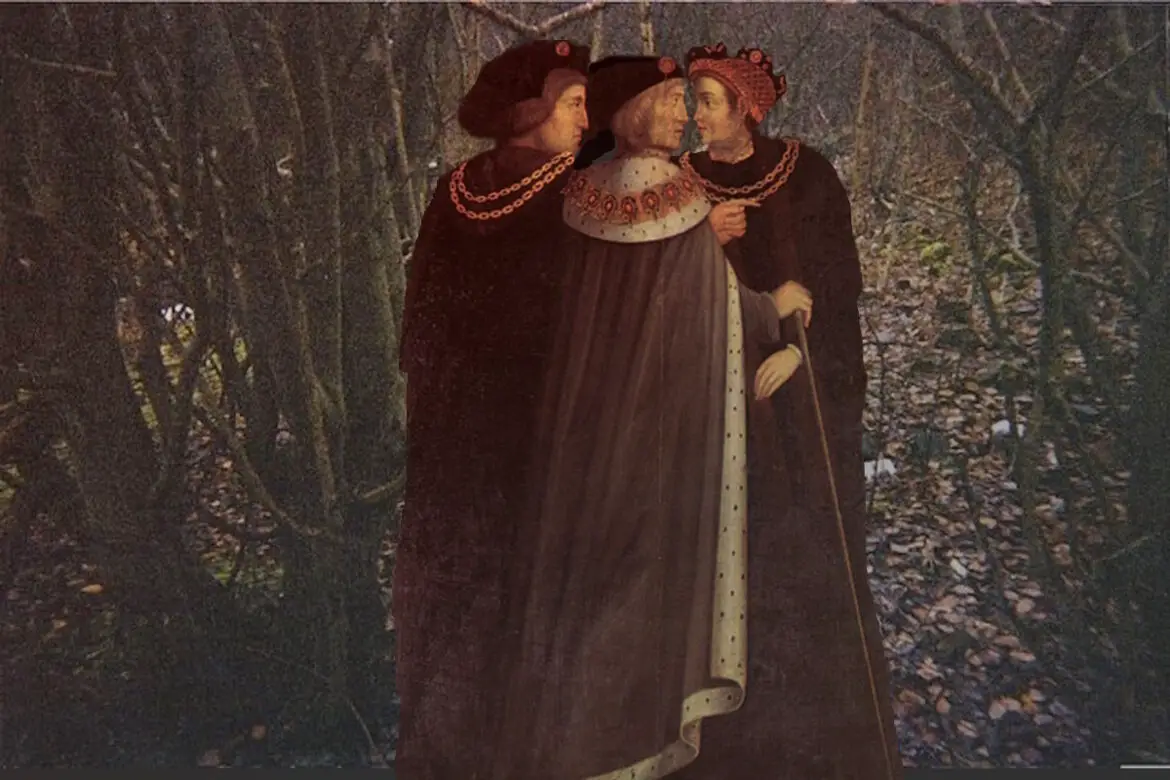The Dudleytown Curse brought misfortune, madness and death to people who lived in Dudleytown — the Village of the Damned. English noblemen beheaded for treason started the curse in the 16th century. Their descendants then brought it to the hamlet in Cornwall, Conn., before the American Revolution. Eventually, those dark supernatural forces drove the villagers away, leaving a creepy forest that grew over a ghost town.
Or so the story goes.
Today it’s a privately owned nature preserve accessed by an old carriage trail, Dark Entry. Nearby, Bald and Coltsfoot mountains and the Housatonic River attract hikers and boaters. Another kind of visitor, the thrill-seeking ghost hunter, is drawn by tales of hauntings told by a couple of self-appointed demonologists. The paranormal investigators come to trespass, litter and record their podcasts and documentaries. to the vast irritation of Cornwall residents.
The only Dudleytown Curse, say disbelievers, is the tourists.

Dudley Town’s former station platform in 2011 with buffers and an old channel carved in it. The channel and buffer beams were for a former gantry crane at the Freightliner depot that Later covered the station platforms and goods yard.
Dark Dudleytown
The first thing you notice when you visit Dudleytown is the deep, dark woods. You don’t even need to go there to know that. The map shows the name of the road that goes through it: Dark Entry.
The second thing you notice is the unnatural silence. No chirping songbirds or cawing crows, no chattering squirrels, nothing. At least that was true in the 1960s.
You might see a cellar hole or two or a ruined stone wall, remnants of the abandoned village. And you will hear the stories of the mysterious supernatural forces that caused everyone to leave.
The Dudleytown Curse
The curse, they say, began with Edmund Dudley, beheaded by Henry VIII on a charge of treason. Then Edmund’s son John, Duke of Northumberland, plotted to install his daughter-in-law, Lady Jane Grey, as queen of England. The plot failed, and he and Jane both lost their heads.

L-R: Richard Empson (d. 1510); Henry VII of England (1457-1509); Edmund Dudley (1462-1510)
One of John’s descendants, William Dudley, emigrated to Guilford, Conn., during the Puritan Great Migration. His descendants came to a hamlet in the hills settled in 1738 by Thomas Griffis, (or maybe Griffith), a farmer. First came Gideon Dudley (or maybe he came later), then in 1747 Abiel and Barzillai arrived. Even later Martin and Obijah Dudley showed up — or maybe not.

John Dudley, First Duke of Northumberland
The settlers cleared the land and formed a community that farmed flax, wheat and corn. Then in 1792 came the first untimely death. Gershon Hollister was murdered in a home owned by William Tanner, who lived next door to Abiel Dudley. Afterward, Tanner started talking about wild animals and demons, then went completely mad.
Abiel Dudley became the next curse victim. He lost all his possessions and his mind.
The Nathaniel Carter family lived in Abiel Dudley’s house, but then moved to Binghamton, N.Y. There they built a log cabin. One day while Nathaniel was away, Natives killed his wife, captured his three children and burned his house. When he returned, they killed him too.
Madness
After the American Revolution, Gen. Heman Swift returned to his home in Dudleytown. There he lost his third wife to a lightning strike and went stark raving mad.

Horace Greeley
Then in 1872, Horace Greeley was running for president. One week before he lost the election, his wife hanged herself in Dudleytown, where she had grown up.
In 1924, Dr. William Clarke, a New York cancer specialist, bought a thousand acres on Bald Mountain, part of which belonged to Dudleytown. One summer he went to New York for a brief business trip and returned to find his wife had gone insane. She spent the rest of her life in a mental hospital.
The Truth
It’s true that Dudleytown residents abandoned their homes, but not because of mysterious supernatural forces. They left because Dudleytown had lousy farmland, and the newly opened West offered more opportunity.
It’s also true that Cornwall’s population had dwindled by half, to 834 residents. Its cheap real estate and closeness to New York City attracted urbanites seeking rural solitude on weekends.
Another Dudley, Rev. Gary P., went to work [when] debunking the tales of murder, suicide and madness that supposedly resulted from the Dudleytown Curse. A descendant of the Dudleytown Dudleys, he pored through old records and newspapers. In 1999, he reported his conclusions. The Cornwall Historical Society sets the record straight.
The Dudleys of Dudleytown had no connections to the noblemen beheaded in England.
Gershon Hollister wasn’t murdered. He fell from a rafter to his death during a barn raising.
Abiel Dudley didn’t go mad. He lived until 90 and got a little senile.
The Carter tragedy happened a long way from Dudleytown. Further, Carter built a house at the forks of the Delaware wilderness, right in the middle of Indian country, wrote Dudley. What did he expect? His three children survived, and his son became a state supreme court justice.
Heman Swift never resided in Dudleytown. He lived to 81 and also got a little senile.
Horace Greeley’s wife never even set foot in Dudleytown. She died of lung disease in New York City.
That unearthly silence? Sometime in the 1960s, Dudleytown had been sprayed with DDT.

The flag of Cornwall, Conn.
Dr. Walter Clarke in Dudleytown
Dr. Walter Clarke actually bought his place in 1900 for weekend visits. His wife had a chronic disease and couldn’t stand the pain. Sometime in 1918 she committed suicide in New York City. But Clarke continued to spend country weekends in Dudleytown.
When Clarke first arrived, Dark Entry Forest was just a name. There was no forest and no dark entry because Dudleytown farmers had clearcut the land.
Clarke wanted to change that.
In 1924, he and friends formed the Dark Entry Forest Association with the aim of reforesting the land. They hoped to run a woodmill and offer recreation to children. So they planted thousands of trees. By the 1930s, a New York ski club used trails for skiing, and summer camps used them for horseback riding. Visitors also canoed down the Housatonic River.
Such idylls ended, however, when the Association closed the forest to visitors.

Canoeing along the Housatonic River in West Cornwall
How the Supernatural Nonsense Started
One over-the-top account called Dudleytown, “Village of the Damned. “ “The ghost town is apparently so haunted that it’s permanently closed to the public,” reported WOKQ in 2022.
It all started in 1926, when Edward C. Starr published his History of Cornwall. For some reason, he included two pages of fictions about Dudleytown residents.
The book didn’t get much attention until the early 1970s. That’s when a Connecticut couple, Ed and Lorraine Warren, videotaped a Halloween special from Dudleytown. They declared it “demonically possessed.” Ed Warren said Dudleytown was “controlled by something terrifying.”

Lorraine and Ed Warren
The Warrens, self-styled demonologists, had famously investigated the Amityville haunting. They kept an Occult Museum in the back of their Monroe home and wrote books such as Satan’s Harvest, Werewolf and Ghost Hunters: True Stories From the World’s Most Famous Demonologists.
Skeptics investigating their claims concluded they promoted a lot of blarney. That didn’t stop their “investigation” of Dudleytown from opening the floodgates to annoying tourists.
Cornwall residents complained the legends of the curse brought noisy hordes. Motorcycle clubs threw beer cans along the side of the road. Drivers along the carriage trails got stuck and needed towing. Tour buses disgorged thrill seekers who stood on the ground waiting to feel supernatural vibrations. Ghost hunters came with recording devices to make videos and podcasts.
The Dark Entry Forest Association finally had enough, and closed the forest to the public. In 2011, police arrested eight filmmakers who’d strayed off the public roads onto private property. Now stories about Dudleytown come with a warning: it’s so creepy you’re not allowed in.
Harriet Clark, former president of the Cornwall Historical Society, wrote a book about the real history of Dudleytown. In The True Facts of Dudleytown, se wrote, ‘Today’s owners and taxpayers of Dudleytown are professional people who live their for privacy and seclusion. They do not welcome tourists or those seeking tales of chilling or wild experiences. Please do not come. There are no ghosts, no spirits and no curse.’
Hermit of Dudleytown
Dudleytown did have a hermit. In 1989, he still lived there. Walter Kilham, an architect, moved to Dudleytown in 1938 after camping there overnight. He bought 40 acres and then built 14 buildings on the property.
People would ask him where to find ghosts, reported the New York Times on Oct. 29, 1989.
“I tell them if you believe in ghosts, I guess you’ll find one,” he said. “If you don’t then there aren’t going to be any.”
Images: Dudleytown forest By Wipsenade at English Wikipedia, CC BY 3.0, https://commons.wikimedia.org/w/index.php?curid=18214069. West Cornwall by Doug Kerr via Flickr, CC By-SA 2.0. Ed and Lorraine Warren By Sydney Morning Herald – Original publication: Sydney Morning Herald talking about the legacy of the Warren published two months after Lorraine's death Immediate source: https://www.telegraph.co.uk/films/0/strange-afterlife-conjuring-couple-ed-elaine-warren/, Fair use, https://en.wikipedia.org/w/index.php?curid=67863995. This story updated in 2024.
